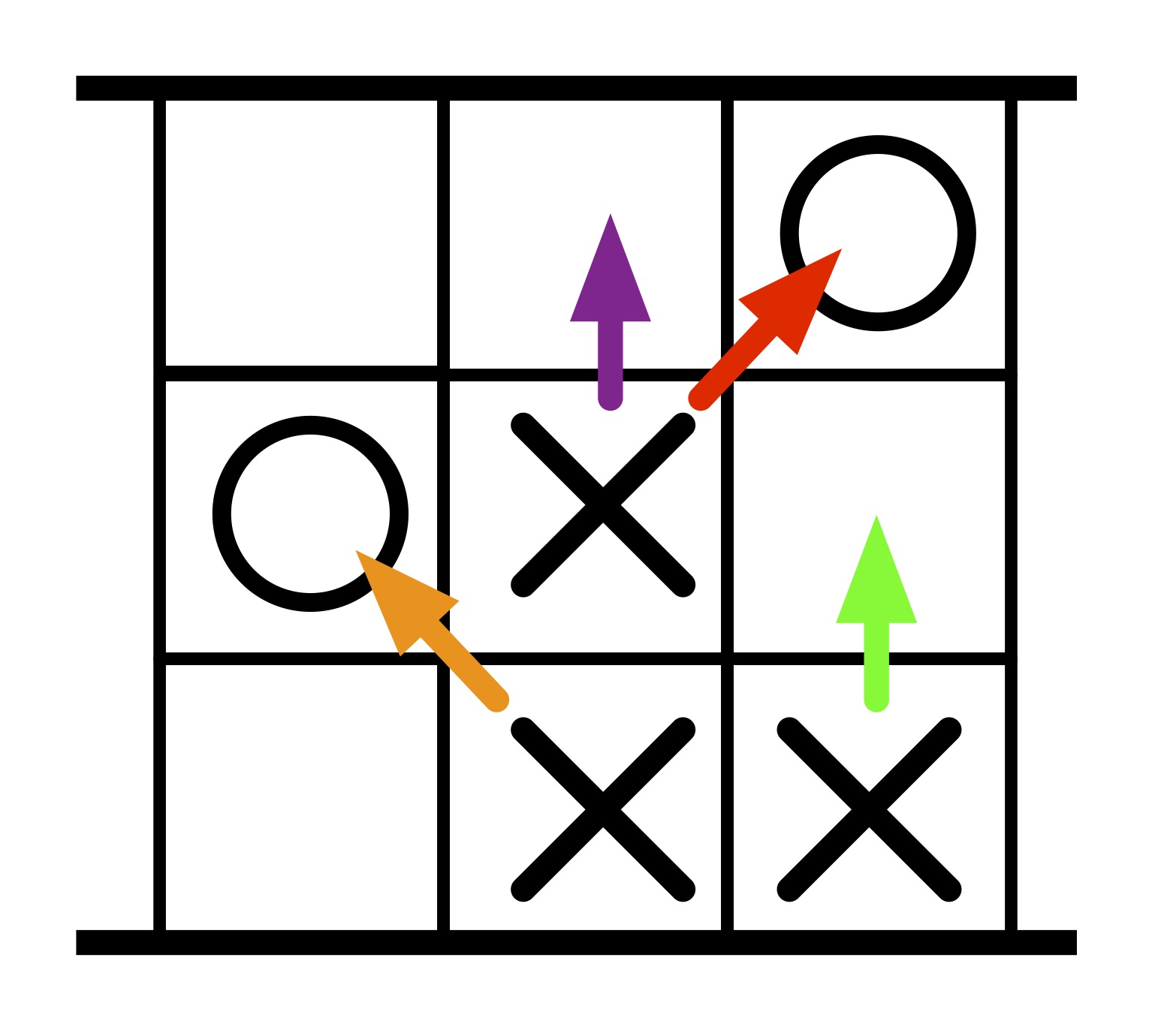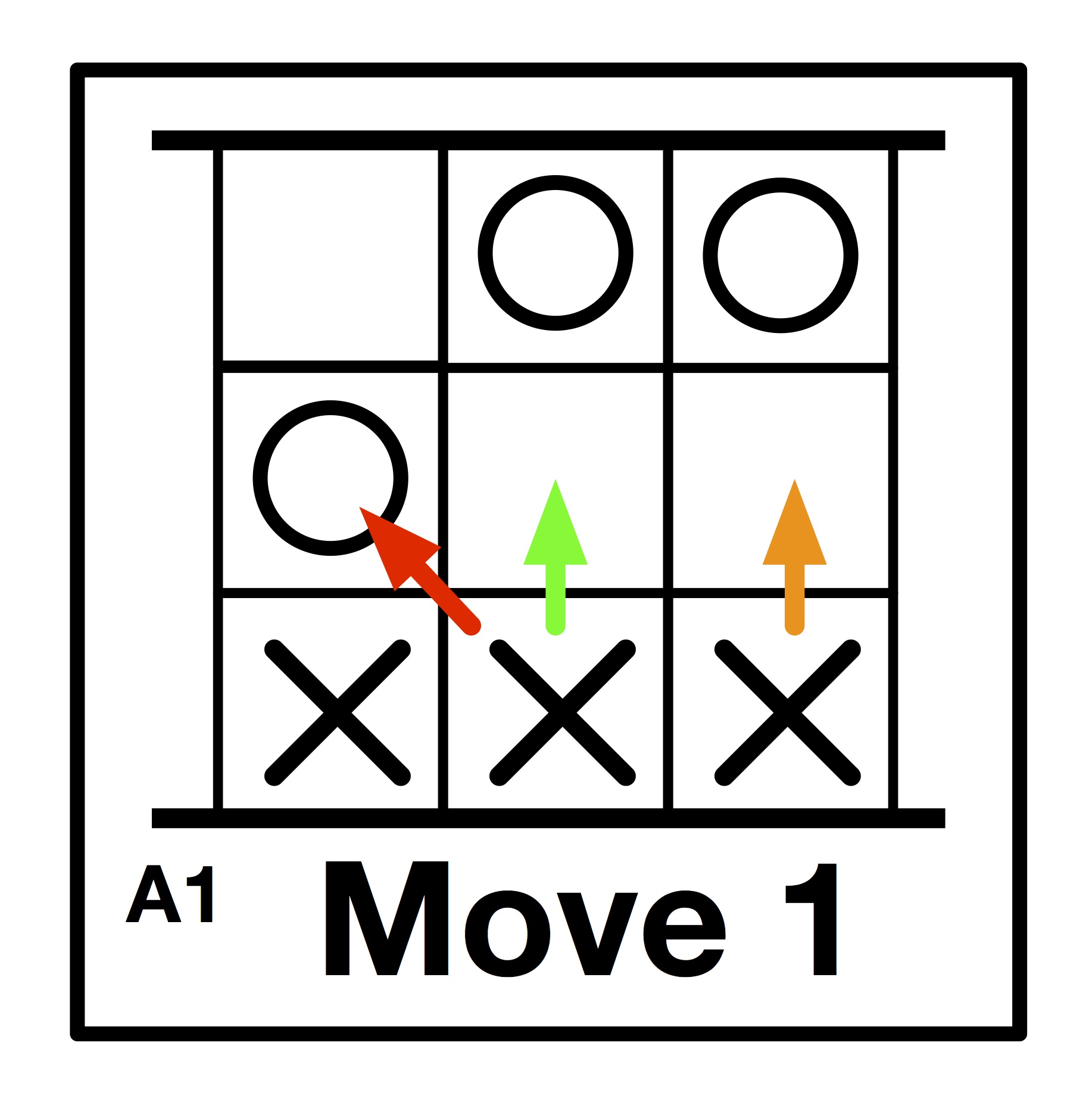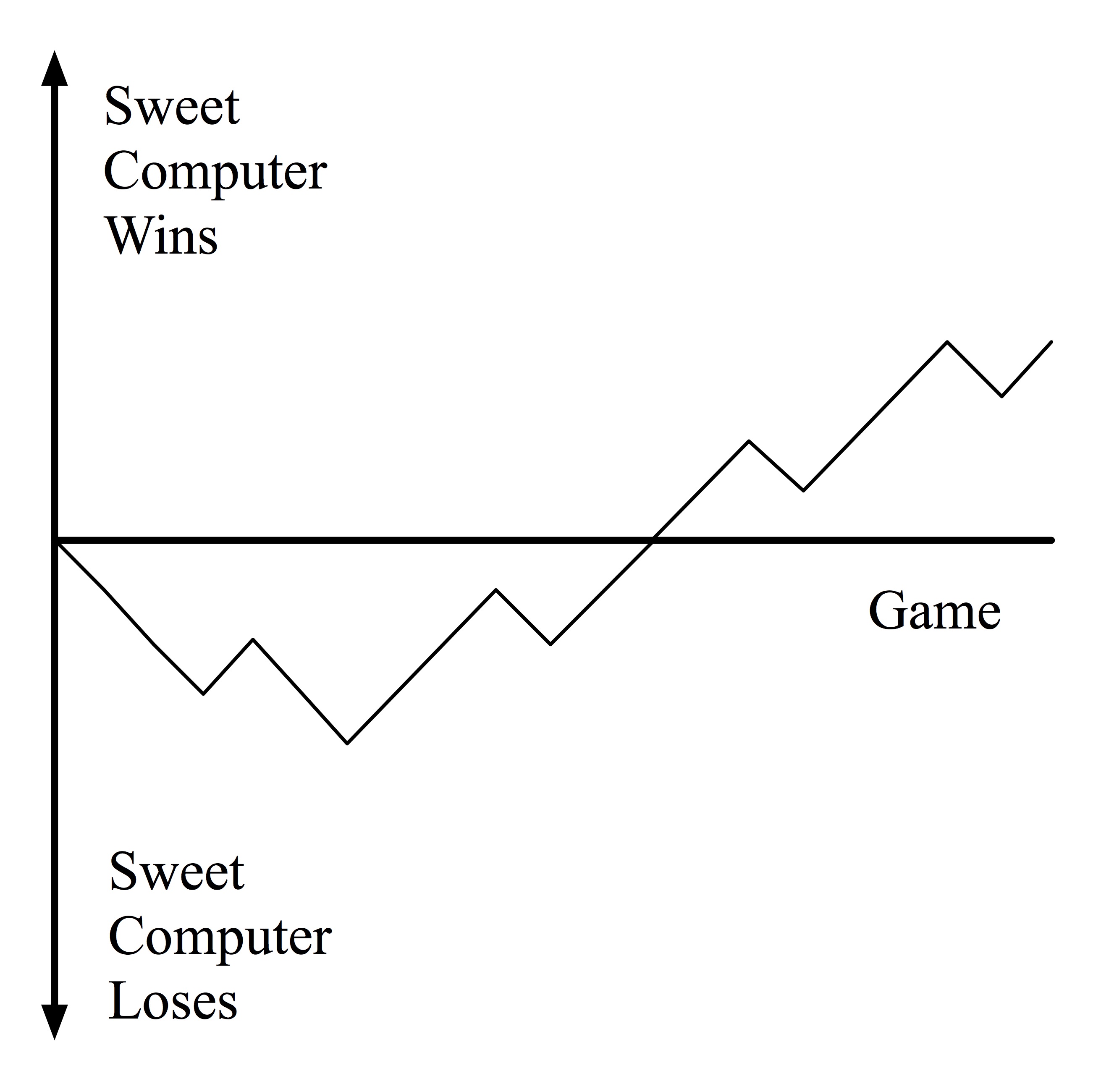A magazine where the digital world meets the real world.
On the web
- Home
- Browse by date
- Browse by topic
- Enter the maze
- Follow our blog
- Follow us on Twitter
- Resources for teachers
- Subscribe
In print
What is cs4fn?
- About us
- Contact us
- Partners
- Privacy and cookies
- Copyright and contributions
- Links to other fun sites
- Complete our questionnaire, give us feedback
Search:
The Sweet Learning Computer
by Paul Curzon and Peter W McOwan, Queen Mary University of London

How do machines learn? Don't they just blindly follow rules? You can build a machine just from cups and sweets that learns how to beat humans at simple games. It learns from its mistakes (because you eat it's sweets when it loses!) Let's see how by building one to play the game of Hexapawn.
The Rules of Hexapawn
The game of Hexapawn is played on a 3x3 board. Three X and three O pieces are placed on the first and last rows of the board. It's a little like playing a mini-game of chess with only pawns. To make a move you can either:
1. Move one place forward if nothing is there, or
2. Take an opponent's piece that's in the next place diagonally
For example, the board at the top shows with arrows the four possible moves for the player playing X from that position.
There are 3 ways to win as illustrated in these three examples showing winning moves by X.

1. Getting a piece onto the last row.
2. Putting the other player in a position so that they can't move.
3. Taking all the other player's pieces
That's all there is to it. Play a few games to get the idea.
Setting up a Sweet Learning Computer
To create the Sweet Learning Computer:
Download the board position labels. They show the different possible board positions the second player (X) can find themselves in and the moves that can be made from each position. and
1. Stick each of the board position pictures on to a plastic cup.
2. Spread the cups out, grouping those for each move together so they are easy to find.
3. Place wrapped coloured sweets that match the coloured arrows shown on its board in to each cup. For example, the cup for position marked A1 (right) has a red, green, and orange sweet.
4. Put the pieces on the board in the start position (see above).
Playing the Game
The Sweet Learning Computer plays second and is X. Whenever it is the computer's turn:

1. Find the cup corresponding to the game position.
2. If there are no sweets in the selected cup, the Sweet Computer resigns.
3. If there are sweets in the selected cup, then pick it up, cover the top with your hand, shut your eyes, shake the cup and take out a sweet at random.
4. Look at the colour of the sweet. Make the move shown by that coloured arrow. For example, if at board position A1 (see diagram) and you pick an orange sweet, the machine's move is to push the right-most X a place forwards as shown by the orange arrow.
4. Place the sweet next to the cup to show the move made.
Note that on the first player's first move, playing down the left or right give symmetrical positions. As they are equivalent we've only provided one of the symmetrical sets of positions (those leading from position A1 above). That means for this version of the game the first player is only allowed to move the left or centre pieces on their first move. We've done this to speed up how quickly the machine learns. Once you understand how it works, extend the machine with the missing positions and check they are all symmetrically equivalent.
Learning by making mistakes
To allow the Sweet Learning Computer to learn from its mistakes you eat it's sweets as follows:
1. At the end of any game that it loses, eat the sweet corresponding to the last move it made.
2. Always place all the other sweets back in the cups they came from.
What's going on

At the start, the Sweet Computer plays randomly so will lose a lot. Every time it does lose it will not make its last, losing, move again (as the sweet that stands for that move isn't there for future games). Eventually positions that always lead to a loss end up with no sweets so the machine resigns. The sweet in the previous move that led to it being in that position is then eaten...it starts to learn about bad second moves and eventually bad first moves. Over time it gets better and better, until it never makes a mistake as all the bad moves have gone. The sweets that are left represent moves that make a perfect game. Plot a graph of when it wins and loses to see its progress learning.
More on ...
Download the Sweet Learning Computer help guide including board position labels Download the Sweet Learning Computer board positions Machine Learning Computing Sounds Wild: cs4fn magazine issue 21Prepared for the Royal Society Summer Exhibition 2016. Sweet Learning Computers are based on the Matchbox Computers of Donald Michie and Martin Gardner


